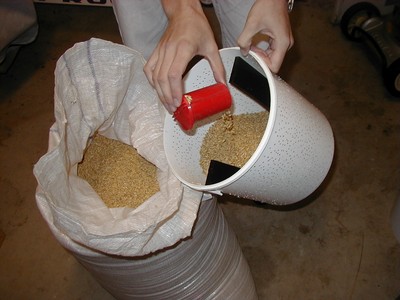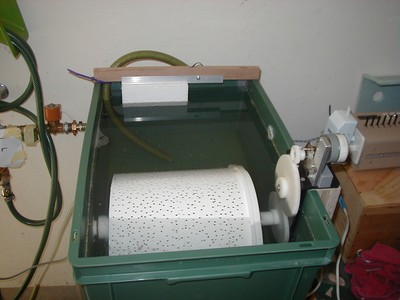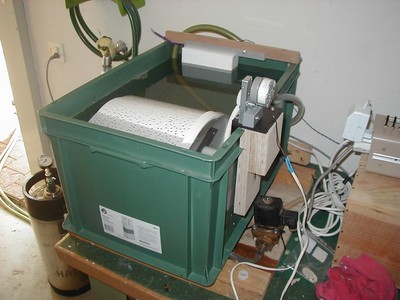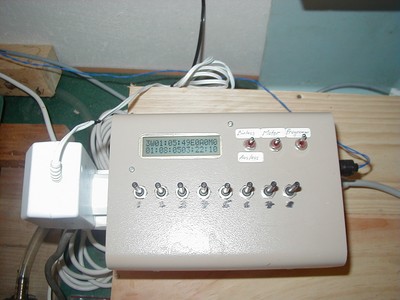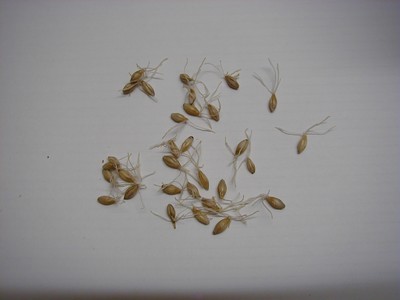Left: This box contains a PIC microcontroller and controls the motor
and the water valves
A typical drying profile starts with a
high air flow at roughly 30 degrees Celsius. The temperature slowly
rises to 50 degrees after 15 hours. After that a faster increase leads
to around 80 degrees. The last four hours are usually at the roasting
temperature around 80-110 degrees, depending on the required type of
malt.
To get a reproducible malt quality, temperatures must be tighly
controlled. Our installation uses an old electric oven that is
controlled by a PC software that implements a PID controller.
Temperatures are measured with a calibrated PT100 element. The airflow
is guaranteed by a vent.
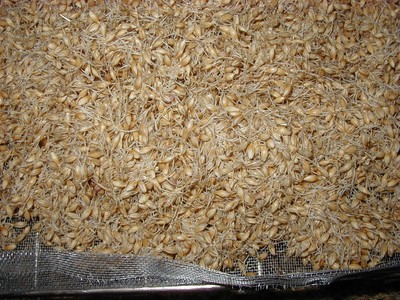
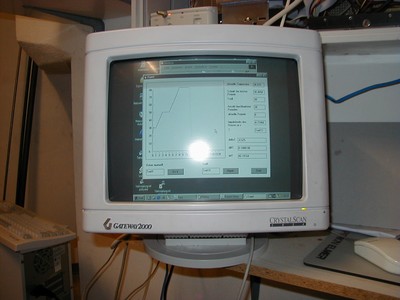
Left: The barley is put into the oven for kiln drying
Right: A PC software controls the temperature curve of the oven. The
temperatures are kept within +- 1 degree Celsius of their goal value
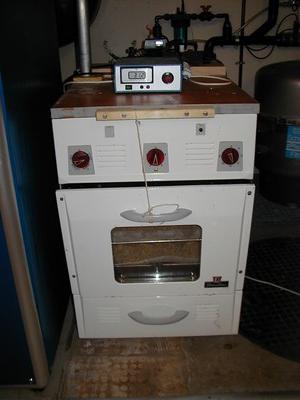
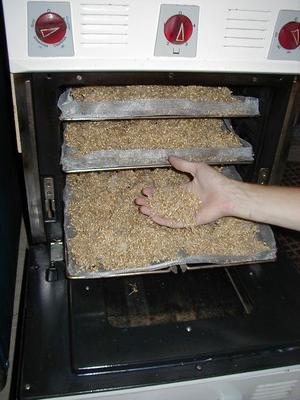
Left: The oven in action. The barley is kept on three hordes made from
metal meshes
Right: Roasted barley after the temperature profile is completed
After the roasting, the radices of the grains must be removed. This is
done mechanically in a metal box where the grain is spinned quickly by
an electrical drill and a paint stirrer.
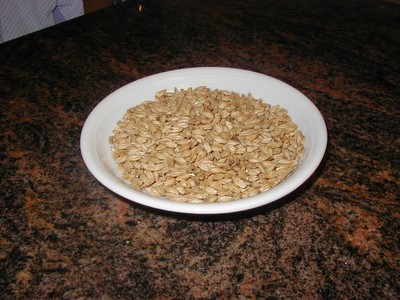
Finished malt, after the dry radices have been removed
